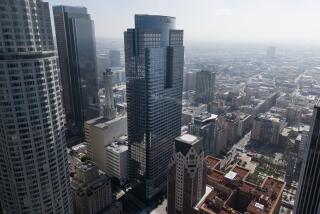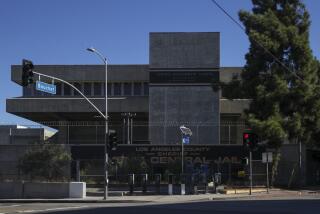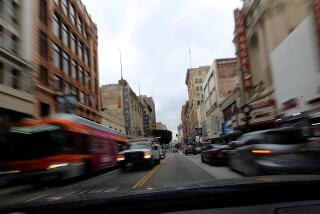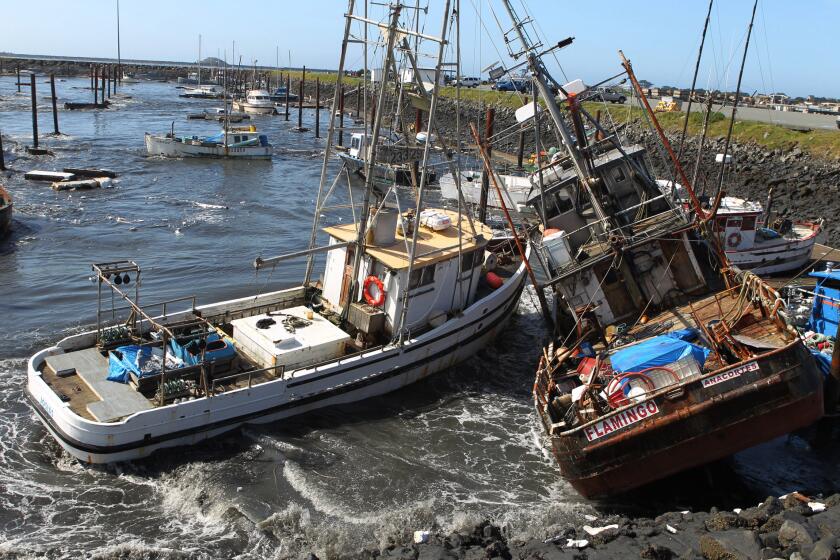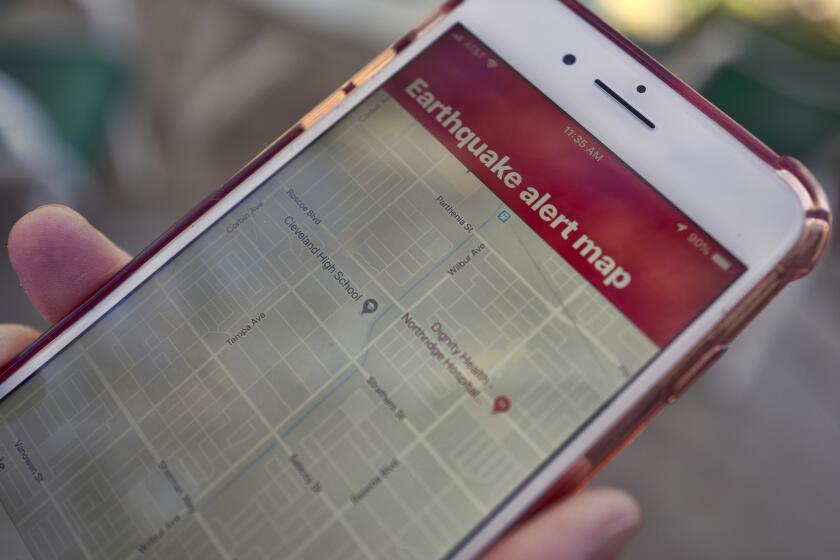Panel Votes to Repair Faulty Coliseum Welds
- Share via
Defective welds in the Los Angeles Coliseum press box will be repaired immediately, the Coliseum Commission decided Wednesday. But the commission voted not to test two disputed vertical columns that are crucial to the structure’s support.
The vote against the testing of the columns was 5 to 3 after a heated debate. All three commissioners present who are elected officials voted for testing, while all five appointed members present voted to discontinue it.
Engineers said the repair of the welds will cost less than $20,000 and will be completed before the beginning of the USC football season next month. Details of the repair procedure were not immediately available.
It was unclear Wednesday who would pay for the testing, which officials say has cost more than $100,000, or for the repairs. Commission lawyers said they would review contracts to determine whether firms involved in the construction were liable.
The new press box was built last year, almost entirely with federal disaster funds, replacing one severely damaged in the 1994 Northridge earthquake.
Problems with the welds and the columns were brought to light in Times articles published in May and June.
A Caltech engineer, John F. Hall, said that, based on his study of construction and inspection documents obtained by The Times, he believed “there is reason to doubt that the welds supporting the structure are going to perform adequately in a strong earthquake.”
The articles were met with fierce denials that any problems existed and assurances from Coliseum officials and contractors that nothing was amiss with the construction.
However, testing undertaken in response to the articles found defects in 26% of the welds that were examined.
Wednesday’s vote ordered repairs to the 12 welds in which the defects were found.
The commission agreed on that action. However, a motion by Los Angeles County Supervisor Zev Yaroslavsky to order testing on the steel columns immediately generated opposition.
Commissioner Sheldon Sloan, a lawyer who deals with development issues in private practice, said he felt that enough had been done to satisfy critics of the work on the press box.
“There’s no such thing as any structure in Los Angeles that is completely safe,” Sloan said. “A 9.0 earthquake will destroy anything.”
But Yaroslavsky repeatedly urged the testing of the columns as a prudent measure.
“We can’t be too cautious,” he said. “This is a public facility.
“If this was my house and someone wrote a Page 1 article saying the two-by-fours were riddled by termites, I wouldn’t rest until those beams were tested, and, if necessary, replaced.”
The press box overhangs about 600 spectator seats and relies on a succession of welded connections and seven vertical columns.
Experts say the locations of potential defects in the 20-foot-tall columns are significant because they encompass areas where horizontal beams are welded in at a right angle.
Engineer John A. Martin Jr. was directed by the Coliseum Commission last month to assess the adequacy of three disputed columns supporting the press box. On Wednesday, he suggested more extensive testing of two of them.
Martin and fellow engineer Nabih Youssef said that they consider the press box to be safe, but that, for reasons of public confidence, they believe the testing of the columns would be a good idea.
Commissioner James F. Dickason accused the two engineers of “double talk” because of those and similar comments.
Yaroslavsky was joined by fellow Supervisor Mike Antonovich and Los Angeles City Council President John Ferraro in voting to authorize testing of the columns.
But appointed members Sloan, Dickason, Lisa Specht, LeRoy Chase and commission President Roger Kozberg prevailed with their votes in opposition. Kozberg, Sloan and Dickason are state appointees, and the two others are city appointees.
Kozberg suggested that the Coliseum is in such financial straits that it may not have the money for even minimal additional testing or repairs.
Regarding the welds that were found to be defective, Martin said it would be “wise to go in and repair and replace” them. Martin was brought in from outside to do his assessment; Youssef has been involved in the Coliseum quake repair project from the beginning.
Yaroslavsky said he found it inappropriate for some engineers who participated in the construction project to be involved in evaluating its safety, likening it to “having the foxes guarding the chicken coop.”
Meanwhile, Richard Holguin, representing the Los Angeles Department of Building and Safety, said sufficient information has yet to be delivered to city inspectors to allow them to issue an occupancy permit for the press box.
The three steel columns were rejected by construction inspectors last year because of defects, but the columns were later accepted without a recommended repair being made.
After Wednesday’s commissionaction rejecting the testing, two independent engineers who have reviewed the matter told The Times that they believed the tests should be conducted.
“That would be the last place I wouldn’t check,” said Robert Milliron, a veteran welding engineer based in Sacramento.
“I’d definitely want to know what was there. Those are critical points.”
Referring to the commissioners who voted against the testing, he said, “They seem to figure that what they don’t know makes it safe.”
John W. Fisher, a professor of civil engineering at Lehigh University in Pennsylvania, said core samples of the columns should be taken. “That would be very inexpensive, and it would put the issue to rest,” he said.
The Times articles reported numerous other problems in the press box construction.
The project’s structural engineer was not informed during construction of many problems--including the cracking and subsequent repair of connections that engineers say are important to the support of the press box. In addition, the structural engineer was not told of inspectors’ warnings in written reports that “delayed cracking,” the fracturing of welds after they were made, was occurring.
The presence of delayed cracking, according to experts, can signify that even welds with no observable flaws are brittle and more susceptible to fracture in an earthquake.
The Times articles also found that some of the engineer’s testing requirements during the construction--intended to better detect delayed cracking--were not followed.
More to Read
Sign up for Essential California
The most important California stories and recommendations in your inbox every morning.
You may occasionally receive promotional content from the Los Angeles Times.
